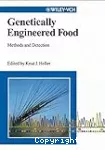Part 1: Application and Perspectives
Part 1: Application and Perspectives
+
-





